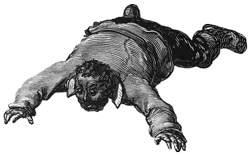Where is Aztlán ?
The earliest mention of Aztlán is in the scant surviving Aztec literature, c.1250, as the place they originated. The Aztecs believed (and some archaeologists make a convincing case that) they had travelled centuries before arriving at lake Texcoco in the Valley of México where they built the magnificent city of Tenochtitlán, which we call México City. Oral tradition describes (and certain archaeologists concur) that the location of this original Aztlán is in what is we call Southern California. Archaeology largely bears this out. Using recently developed linguistic techniques there is now a well-supported theory that confirms these California origins. Therefore we can say that for the Aztecs, Aztlán is what we now call Southern California/ Northern Baja. An interesting fact to note is that it is universally accepted that the Aztecs arrived in the Valley of Mexico only in around AD 1200.
Subsequently, recently, in the 19th century, after the loss of about half their territories to the USA in what the US calls the Mexican American War (Mexico well calls it the Expansionist War of Agression Against Mexico (La Guerra de Agresión Expansionista de Estados Unidos contra México)), it was in vogue for Mexicans to refer to the captured territories as Aztlán. So for Mexicans of this period Aztlán was Arizona, New Mexico, Texas, California, etc.
Starting in the 1960’s in (Alta) California, political activists working to improve the lives of Latinos used the term Aztlán to describe the geographical, metaphysical, political and cultural worlds where the ‘American’ descendants of Spanish-speaking ancestors resided. They referred to themselves as La Raza.
For me, Aztlán is a place between languages, cultures, peoples; a border region between USA and Mexico, between Western North America and the Eastern Pacific Ocean, and the capital city is Tijuana. For me Aztlán reaches from the Santo Tomás Valley of northern Baja north to Monterey/ Santa Cruz, and east to the Mojave desert around Amboy Crater. It is a busy place with millions of people of diverse natures. Did you know that the most populous language group in Los Angeles is Korean? Spanish is number 2 with English speakers coming in at number 3. Tagalog speakers number in the millions as do Japanese. It is a region of Car Culture obsessives, NRA gun nuts, migrant workers, aerospace engineers, surfers, beach bums, proselytizing (so-called) Christians, Hollywood film workers, just to name a few of the more visible denizens. I grew up here, and all these peoples and places inform my music. I live now on Vancouver Island in British Columbia Canada, and with all the Cubans, Mexicans, Salvadorans, Chilenos, Spaniards and other Latinos living here, I believe that I am still living in Aztlán; I never left.
Where is Aztlán ?
The earliest mention of Aztlán is in the scant surviving Aztec literature, c.1250, as the place they originated. The Aztecs believed (and some archaeologists make a convincing case that) they had travelled centuries before arriving at lake Texcoco in the Valley of México where they built the magnificent city of Tenochtitlán, which we call México City. Oral tradition describes (and certain archaeologists concur) that the location of this original Aztlán is in what is we call Southern California. Archaeology largely bears this out. Using recently developed linguistic techniques there is now a well-supported theory that confirms these California origins. Therefore we can say that for the Aztecs, Aztlán is what we now call Southern California/ Northern Baja. An interesting fact to note is that it is universally accepted that the Aztecs arrived in the Valley of Mexico only in around AD 1200.
Subsequently, recently, in the 19th century, after the loss of about half their territories to the USA in what the US calls the Mexican American War (Mexico well calls it the Expansionist War of Agression Against Mexico (La Guerra de Agresión Expansionista de Estados Unidos contra México)), it was in vogue for Mexicans to refer to the captured territories as Aztlán. So for Mexicans of this period Aztlán was Arizona, New Mexico, Texas, California, etc.
Starting in the 1960’s in (Alta) California, political activists working to improve the lives of Latinos used the term Aztlán to describe the geographical, metaphysical, political and cultural worlds where the ‘American’ descendants of Spanish-speaking ancestors resided. They referred to themselves as La Raza.
For me, Aztlán is a place between languages, cultures, peoples; a border region between USA and Mexico, between Western North America and the Eastern Pacific Ocean, and the capital city is Tijuana. For me Aztlán reaches from the Santo Tomás Valley of northern Baja north to Monterey/ Santa Cruz, and east to the Mojave desert around Amboy Crater. It is a busy place with millions of people of diverse natures. Did you know that the most populous language group in Los Angeles is Korean? Spanish is number 2 with English speakers coming in at number 3. Tagalog speakers number in the millions as do Japanese. It is a region of Car Culture obsessives, NRA gun nuts, migrant workers, aerospace engineers, surfers, beach bums, proselytizing (so-called) Christians, Hollywood film workers, just to name a few of the more visible denizens. I grew up here, and all these peoples and places inform my music. I live now on Vancouver Island in British Columbia Canada, and with all the Cubans, Mexicans, Salvadorans, Chilenos, Spaniards and other Latinos living here, I believe that I am still living in Aztlán; I never left.
Jesse Lee Pogoler aka Johnny Guaguancó Mar 2019
